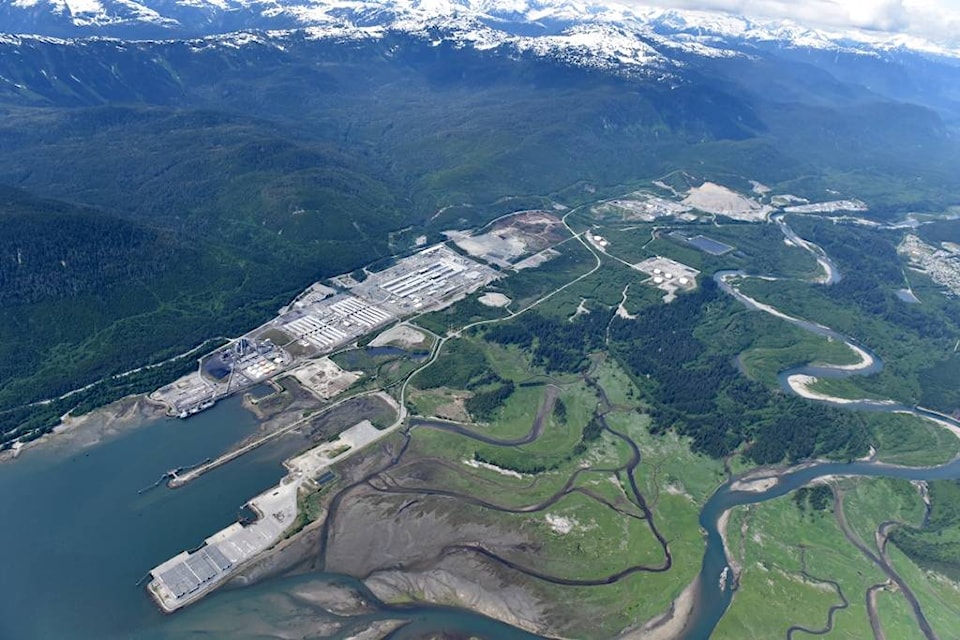Rio Tinto and the members of the Canadian aluminum industry have responded to tariffs U.S. President Donald Trump announced for aluminum imports Aug. 6.
READ MORE: Trump slaps tariffs on Canadian raw aluminum
READ MORE: Canada plans $3.6 billion in retaliatory tariffs on U.S. in aluminum dispute
“Together with our local union, we are working with our US customers to minimize any negative impacts to the integrated supply of aluminium in North America while continuing to advocate for the tariffs to be lifted,” Affonso Bizon, General Manager at Rio Tinto BC Works, said in a statement. “Aluminium from Canada is a historic source of strength for manufacturers in the US and we are committed to ensure a steady supply of metal during the current uncertain economic conditions.”
Last week, Trump announced his plans to impose a 10 per cent tariff on raw aluminum being imported to the U.S. from Canada, which would come into effect Aug. 16. This announcement comes just over a year after Canada and the U.S. came to an agreement and ended the previous tariffs that had been placed on Canadian aluminum imports by the U.S. in 2018.
READ MORE: U.S. to slap steel and aluminium tariffs on Canada, Mexico
READ MORE: U.S. tariffs on Canadian aluminium scrapped
“The application of the 232 tariffs to Canadian aluminium is unfortunate as it only increases prices for US consumers, undermines market confidence in secure supplies of aluminium in North America and is a distraction from implementing USMCA,” Bizon said. “Our priorities remain our employees’ health and safety, the economic health of our communities and supplying our customers with high quality aluminium.”
Overall exports of primary aluminum from Canada into the United States declined by about 2.6 per cent from May to June, according to a media release from the Aluminium Association of Canada (AAC). Primary aluminum import volumes from Canada for the first six months of 2020 were nearly five per cent lower than same period in 2017.
“While the US produces, at best, one million metric tonnes a year of primary metal, it consumes six times that amount” AAC’s media release said. “Re-imposing tariffs only raises costs for US consumers and businesses in the middle of economic recovery efforts.”
Martin McIlwrath, President of the UNIFOR Local 2301 union, which represents workers at the Rio Tinto aluminum smelter in Kitimat and Kemano power generating facility, said there is a coordinated effort between the local and national levels of UNIFOR and the Canadian aluminum industry to combat these tariffs.
“It’s very concerning for all aluminum workers in Canada, especially us in B.C. because, you know, of course tariffs bring economic uncertainty and certainly from all of the research we’ve done, there doesn’t seem to be any valid reason for these tariffs to be imposed,” McIlwrath said.
McIlwrath said that, as Aug. 16 is the date that Trump plans to impose the tariffs, the hope is that the Canadian aluminum industry and the Canadian government still have some time to work things out.
“Right now, we’re definitely trying to put a lot of pressure on the federal government, that they need to have a swift and aggressive trade reaction to these tariffs,” McIlwrath said.
Taylor Bachrach, MP for the Skeena-Bulkley Valley riding, said he’s calling on Prime Minister Justin Trudeau and the Liberal government to fight back against these tariffs in any way possible.
“I am calling on the Trudeau government to do everything in its power to fight back against these tariffs and more specifically, to come up with a long-term plan for Canada’s aluminum industry,” Bachrach said. “Because the reality is that there is nothing in the current agreement to prevent this happening again and again in the future, and that creates tremendous uncertainty for communities that rely on aluminum smelting for employment.”
Bachrach said he’s disappointed to see the tariffs back in place, especially so quickly after the last tariffs were lifted in 2019.
“It shows that the Trudeau government hasn’t fixed the situation. What we need is we need plan from this government that shows how they’re going to protect the livelihoods of aluminum workers.”
Bachrach said that the last time the Canadian government responded with retaliatory tariffs to the U.S. aluminum tariffs imposed in 2018, they put tariffs on some very specific U.S. products, that didn’t necessarily have much to do with aluminum, which was sufficient enough to put pressure on the U.S. government to lift the tariffs on Canadian aluminum imports.
However, with the 2019 agreement between Canada and the U.S., there is a stipulation that retaliatory tariffs can only be put on aluminum products.
“We’re more limited now than ever in terms of the effectiveness of those retaliations,” Bachrach said.
As well, Bachrach added there are clauses in that same agreement that speak to a surge in Canadian exports of aluminum justifying tariffs. However, there is no definition for what a surge is, which gives Trump the ability to seemingly put tariffs in place on a whim.
“The most recent announcement is … most clearly an attempt to increase his popularity in the US in advance of the election and it causes harm to Canada’s aluminum industry and, at the same time, it’s damaging to US manufacturers that use Canadian aluminum,” Bachrach said. “And the reality is that the Liberal government has been missing in action on this file, and it’s workers and their families who are going to pay the price.”
clare.rayment@northernsentinel.com
Like us on Facebook and follow us on Twitter
